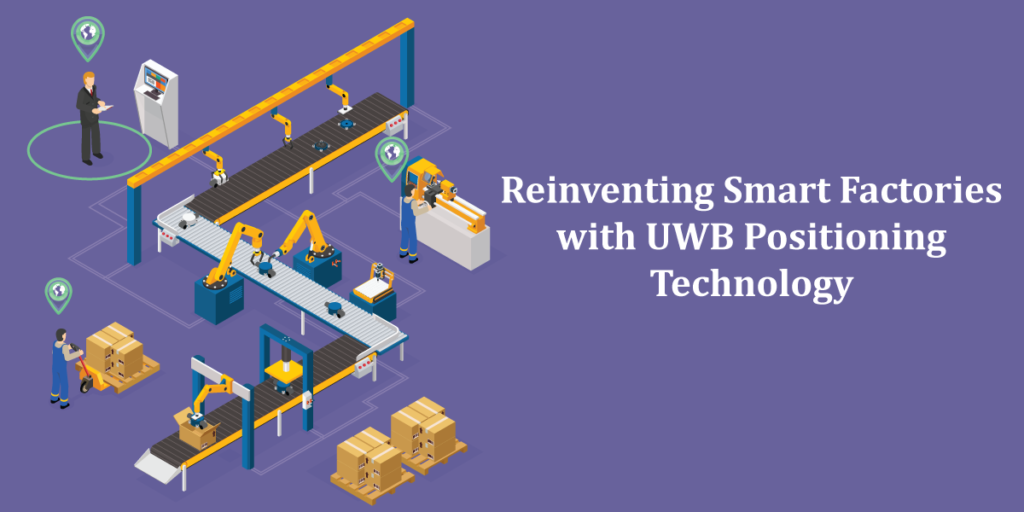Smart factories are one among the many examples showcasing the true capabilities of technology advancements. The innovation in the manufacturing sector paved the way for smarter adoptions, resulting in five times more productivity and improved rationalization of inventory and capital expenditure.
Latest reports on manufacturing evolution suggest that the global smart factory market is expected to grow from USD 271 billion in 2020 to an impressive USD 422.88 billion by 2026.
The rising popularity of smart factories has prompted many manufacturing experts to follow the trail and invest more in smart manufacturing practices.
To facilitate accurate tracking in smart factories, Ultra-wideband (UWB) based systems are preferred over RFID or Wi-Fi solutions. Employing UWB-powered positioning systems will help in redefining location tracking in smart factories and will take innovation a notch further in the manufacturing process. Read below to see why UWB is the best choice for location tracking in smart factories.
Perks of Using UWB Positioning Technology
Owing to its higher accuracy, reliability, and faster transmission of data, Ultra-wideband technology is the most popular radio-based communication technology for indoor localization of assets in motion. Let us explore the many benefits of this technology for location tracking in smart factories.
#Accurate positioning data
UWB facilitates on-point tracking of moving assets, owing to its high bandwidth, and significantly low-frequency signal. You can pinpoint asset location to the highest accuracy of ten centimeters using Ultra-wideband technology, which is much more precise than Bluetooth or Wi-Fi-powered systems. UWB-based location systems also offer a high refresh rate. For instance, a location tag, as part of the UWB positioning system, can send location information for the traced assets up to five times a second.
#Works well in complex environments
UWB is an ideal technology to track assets and resources in a smart factory with a large number of employees and with higher fleet traffic. UWB is less prone to interference by machinery, higher traffic, and other harsh environmental factors, making it the best option for location tracking in production sites.
#Low radio interference and lower power consumption
The UWB-based indoor location system is an excellent choice for smart facilities with multiple rooms, where you may find multiple sources of radio signals. The UWB signal has lower power than most surrounding noises and it spreads uniformly across a wide spectrum. This feature allows Ultra-wideband signals to effectively exist with other radio signals, like those issued by Bluetooth devices and other smart devices.
The low power consumption of UWB-powered location tags leads to its higher working efficiency and consequently results in lower maintenance costs for businesses.
#Higher scalability
One of the many reasons that make UWB-based systems ideal for location tracking in smart factories is that they can track hundreds of tags in any given location, with high precision. The users can view the assets and monitor the tracking in real-time by accessing dashboards. The smart factories can expand the tracking area and the number of tracked resources easily without opting for reinstallation while using UWB-based systems.
Ultra-wideband technology-aided location tracking will take smart factories to the next level. These location systems come with a short deployment time and can be integrated without disrupting any existing operations. Automate asset and resource tracking and enjoy real-time location data for higher operational performance.
If you are looking for precise indoor location tracking services, we can help you. dSense, our IoT-powered RTLS solution comes with UWB/BLE location tags and more, to facilitate real-time resource tracking. Contact us today for further details.







